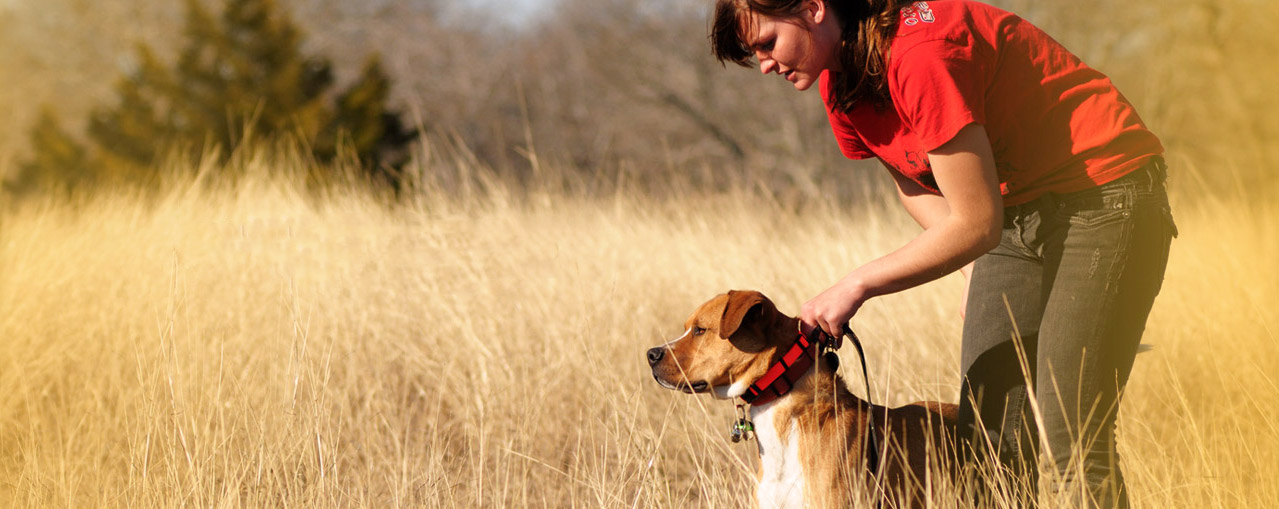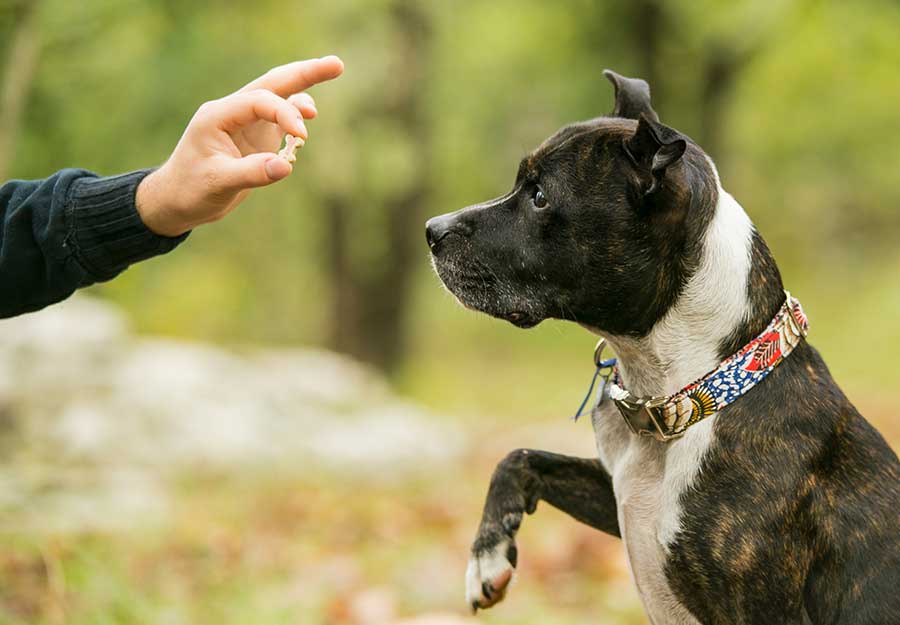The Ultimate Guide to Canine Training: Structure a Satisfied, Obedient Family Pet
Reliable pet training is a multifaceted procedure that rests on a deep understanding of canine actions and the application of tried and tested techniques. By embracing positive support and consistent command use, pet dog proprietors can grow not just obedience yet also a solid, trusting partnership with their canines. The journey does not finish with basic commands; addressing behavioral concerns and creating a nurturing training atmosphere are just as vital parts. As we explore these elements, it comes to be evident that the course to a material and well-behaved canine friend might hold much more intricacies than one might at first think.

Understanding Pooch Behavior
Exactly how does a canine's actions show its psychological and mental state? A pet's actions can function as a home window into its feelings, requirements, and total mental health. For example, a wagging tail commonly indicates happiness and excitement, while a reduced tail may suggest anxiety or submission. Articulations such as barking or grumbling can connect a range of emotions, from joy to distress.
Body movement also plays a critical function in understanding canine behavior. A loosened up position and open mouth signal convenience, whereas strained muscular tissues and pinned ears may suggest stress and anxiety or hostility. Observing these signals is essential for recognizing the origin causes of a pet's habits, whether it comes from excitement, fear, or stress.
In addition, a dog's interaction with its setting and various other animals can supply insight right into its mood. A canine that engages happily with other pets is likely sensation protected and social, while one that shows avoidance or aggressiveness might be experiencing tension or instability. Comprehending these behavioral hints is crucial for promoting a solid relationship in between the animal and the owner, inevitably adding to the pet's emotional wellness and health.
Crucial Educating Strategies
Reliable pet training methods are crucial for cultivating preferable habits and reinforcing the bond in between a canine and its proprietor. Making use of positive reinforcement is among the most reliable techniques, where rewards such as treats, appreciation, or play are offered to strengthen preferred actions (dog training charlotte nc). This urges the dog to repeat those habits, creating a positive knowing atmosphere
Uniformity is another critical element in dog training. Commands must be clear and consistent, and all member of the family must apply the same policies to stay clear of confusing the pet dog. Timing is equally important; benefits should be given immediately after the desired actions to develop a clear link between the action and the reward.
Furthermore, brief and appealing training sessions work, as dogs have varying interest spans. Objective for sessions of 5 to 15 mins, depending on the canine's age and energy level. Including play into training can likewise enhance inspiration and satisfaction for both the owner and the dog.
Last but not least, persistence is important. Pets learn at their very own pace, and maintaining a calm attitude will certainly assist ease irritation, ensuring a favorable training experience. These crucial techniques lay the groundwork for effective pet training and a harmonious connection.
Fundamental Commands to Instruct

Uniformity and positive reinforcement are key when showing these commands. Dog training. Use treats, appreciation, and play to compensate your pet's successes. Short, constant training sessions are a lot more efficient than long, infrequent ones. By instilling these standard commands, owners furnish their dogs with the skills needed for a unified and well-behaved relationship.
Attending To Typical Behavioral Issues
Understanding and attending to common behavior issues in canines is crucial for cultivating a harmonious relationship in between pets and their owners. Several canines exhibit actions such as extreme barking, chewing, or aggression, which can come from anxiousness, dullness, or absence of proper training. Determining the source of these behaviors is the initial action toward effective intervention.
For instance, excessive barking might indicate a need for focus or a response to environmental stimuli. In such situations, proprietors ought to assess the pet's setting and offer adequate psychological excitement, such as interactive playthings or routine workout. Eating can typically be taken care of by redirecting the habits to appropriate chew products and ensuring that the pet has adequate exercise to lower dullness.
Aggressive actions requires mindful handling and might demand specialist training aid. It's important to comprehend that punishment can aggravate stress and anxiety and hostility, leading to a cycle of behavioral issues. Rather, emphasis on favorable support strategies to compensate preferable behaviors and reinforce a sense of protection.
Building a Positive Training Setting
Creating a favorable training environment is basic for reinforcing preferable actions in dogs and reducing behavior problems. This environment ought to be identified by uniformity, motivation, and a clear understanding of the training goals. By establishing a routine, pet dogs discover what is anticipated of them, which helps in reducing stress and anxiety and confusion.
Using positive reinforcement strategies, such as treats, appreciation, and play, promotes a feeling of Clicking Here safety and security and motivation in the dog. Rewarding great habits promptly and regularly strengthens the wanted activities, making the training procedure extra efficient - dog training charlotte nc. Additionally, instructors should continue to be person and calmness, as canines are sensitive to their handlers' feelings
The training area ought to be devoid of diversions to ensure the pet dog can concentrate on the tasks handy. Consider utilizing a silent room or a safe and secure outside location. Additionally, integrating playtime and socializing into training sessions promotes a well-shaped technique, boosting the dog's learning experience.
Ultimately, a favorable training environment nurtures a strong bond between the canine and handler, leading to an obedient, delighted pet. By prioritizing this setting, pet dog owners can efficiently deal with behavioral difficulties and cultivate an effective training trip.
Verdict
Reliable pet dog training click for info counts on a comprehensive understanding of canine behavior and the application of favorable support techniques. By grasping necessary commands and addressing behavior issues with perseverance and clear communication, owners can cultivate a strong bond with their animals. Creating an encouraging training setting boosts safety and trust fund, inevitably leading to the advancement of a joyous and well-behaved buddy. Taking on these principles guarantees a gratifying training experience for both pet dogs and their proprietors.
Efficient pet training is a multifaceted process that pivots on a deep understanding of canine actions and the application of tested techniques. A canine that involves playfully with other dogs is likely feeling social and protected, while one that displays avoidance or aggression may be experiencing stress or instability.Efficient pet dog training methods are necessary for promoting desirable actions and reinforcing the bond between a pet and its owner.Developing a favorable training atmosphere is essential for enhancing preferable habits in dogs and mitigating behavior issues.Effective pet training depends on an extensive understanding of canine habits and the application of favorable support methods.